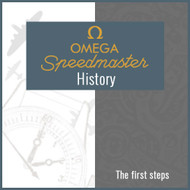Omega Speedmaster history part II : The first steps
12th Aug 2020
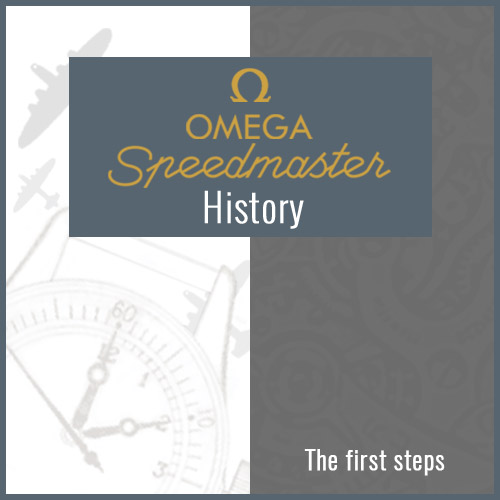
We take up our story leaving behind the first decades of the 20th century to enter into the 40's, a period marked by a war that required resistant and reliable watches from the manufactures, and also the moment of a really important transition in the Omega history, the first steps of the Speedmaster and how it will change the future of the brand forever.

During previous years, as we have told you in our previous post, Omega had positioned itself in a good place both in the world of aviation and in many others in the watch scene, was there a world in which the brand was not?
In many fields their success was indisputable, such as in sports, for which they were able to develop chronographs with an exceptional quality, and because of that, they were the first watchmaking manufacturer to timing a complete Olympic Games in 1932. The union of these two worlds, timing and aviation, defined, without a doubt, one of the most recognizable faces of watchmaking.
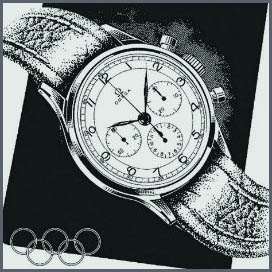
One Proof of confidence of the specialized opinion about the brand at that point, was the delivery, between 1939-1945, of more than 110,000 watches to the British and to the Royal Air Force in particular, in addition to the aforementioned Royal Italian Aeronautics. Omega became very soon the official watch for many other air forces, particularly those in France, Belgium, Canada, the United States, Mexico, Peru, Australia, New Zealand, Cambodia, Burma, and Pakistan.
In 1940, a special model was created for RAF pilots, with caliber 23.4 SC.
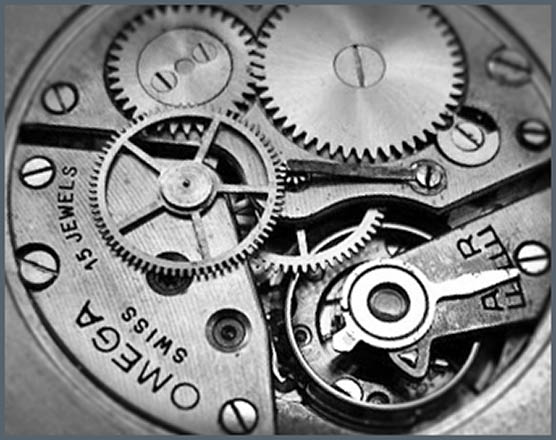
The original note dated 5 January 1940 is preserved : "Urgent order from sales subsidiary Omega Watch Co. London (customer 1150) for 2000 watches equipped with a rotating bezel and intended for RAF crews. Delivery from March 10, 1940, to goldsmiths and silversmiths, suppliers of His Majesty. "

It was mounted on a steel case with a Weems rotating bezel and a 4 o'clock crown, that allowed immediate reading of the flight duration (same as a stopwatch), silver dial, minutes markers, arabic numerals, blued steel hands and central seconds with counterweight. The caseback was engraved with the Royal British Crown and the inscription "A.M. - Goldsmiths & Silversmiths Co. Ltd", as well as various acronyms and numbers, such as "Mk V11 A - 6B 159 – 3725/40".
At that time, airplanes were not the best place to perform mathematical calculations. The need for thick gloves to compensate for the cold in an open cockpit, or the lack of light, that often made almost impossible to see the horizon clearly, turned the cockpit into an inexhaustible source of stress and fatigue. Also, the tools weren't good enough, the planes weren't technologically developed, and, many times, the pilots didn't end at the destination they were supposed to arrive at (even Charles Lindbergh got lost a couple of times), so they needed to wear watches accurate enough to avoid making mistakes when flying, and in many cases, while they performed precision calculations in a fraction of a second at 584 km / h (the maximum speed of a Spitfire, RAF's main aircraft).
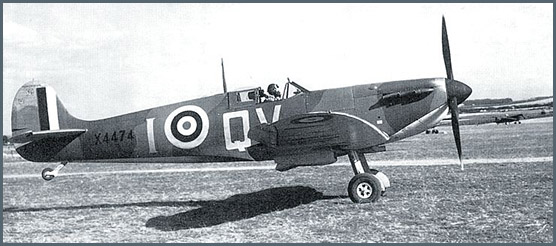
Thus, driven by the need for security and precision, Omega and other watchmaking manufacturers, such as Longines or Movado, implemented the Weems bezel, the first external rotating bezel.
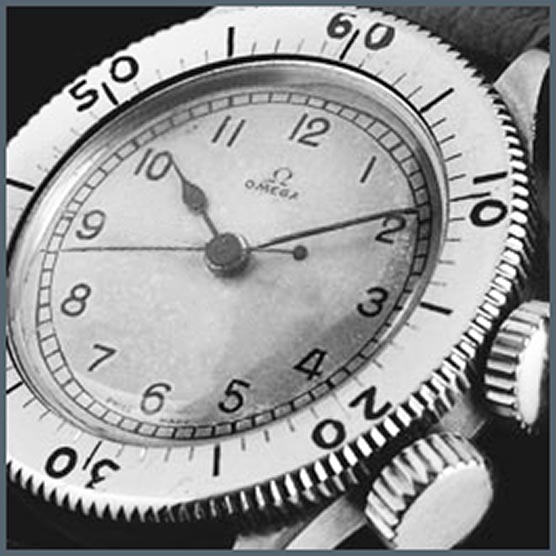
The Weems was designed by Philip van Horn Weems, who was a naval officer that taught pioneers of navigation, such as Charles Lindbergh, new astronomical navigation techniques. Weems gifted Lindbergh one of his watches and taught him how to use it after the two man met in 1928.
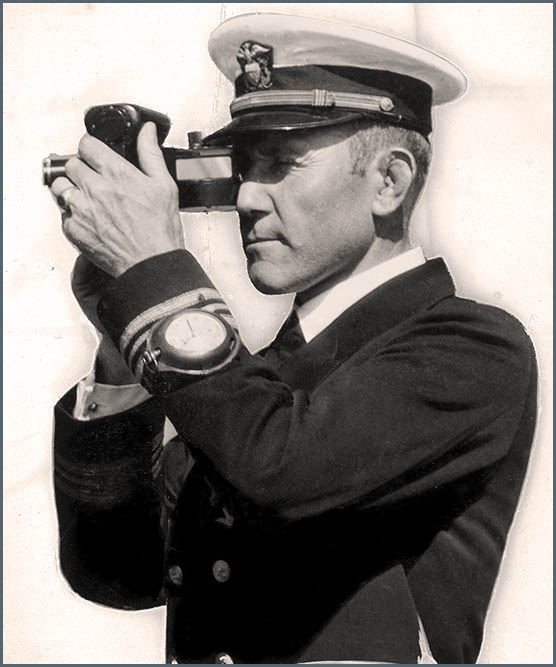
Patented for use in navigation and intended to synchronize the watch with a radio signal, it gave the pilot an accurate time reference. The time readings had to be extremely accurate, because an error of one second could divert a vintage plane a mile from its course.
The solution to the problem was to design a watch that had a movable bezel. The seconds would be printed on it and could be rotated with a second crown. A pilot sitting in an airplane cockpit could listen to the radio, which beeped to monitor the margin of error between watch timing and the radio signal, minimizing possible navigation errors.
Weems systems evolved, thanks to the contributions of Lindbergh. The bezels and dials became more complex to create watches more focused on celestial navigation, so that the pilots didn't have to perform complex mathematical corrections or have to use a sextant, just check the time on their wrist.
A great upgrade in watches was the addiction of a very practical feature, the tachymeter, which allows calculate speed based on travel time, or measuring distance traveled based on speed, in a faster and easier way. This new feature made the chronograph an invaluable tool in marine, submarine and aeronautic navigation, where GPS didn't exist to identify the position, not even by chance, so it was a great help in air warfare of that moment, in addition to other areas, such as sports, especially motorsports.
In 1942, and moving us away from the exclusively aeronautic field, Omega launched the project 27 CHRO C12, or project CH 27 Lemania, an excellent quality column wheel and Breguet spiral chronograph:
- The "27" referred to the diameter of the 27 mm movement.
- "CHRO" is an abbreviation for chronograph.
- "C12" refers to a 12-hour watch.
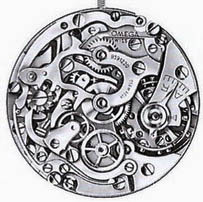
Omega was currently using chronograph movements with three different diameters: 28.9 mm, 33.3 mm and 39 mm. But the company needed to create a smaller new 12-hour chronograph designed specifically for being used on a wristwatch.
Lemania became Omega's largest supplier of chronograph movements after its union with the SSIH (a company formed by Omega and Tissot) in 1932.
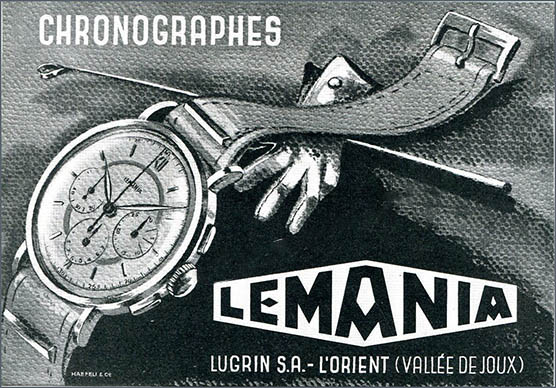
Albert Piguet, then head of the Lemania Technical Office, of which he became technical director in 1948, remembered in an interview how Marius Meylan, CEO of Lemania, had visited him on his return from Biel, where he had been suggested to develop 27 mm diameter chronograph caliber, as flat as possible, with 30 minute and 12 hour counters, which will be the beginning for the Speedmaster movement.
When Piguet was asked to design this new compact chronograph caliber, Piguet assumed that his intended clients would be lawyers, doctors or architects. For sure, he didn't imagine that the project he was going to lead will evolve until be on the surface of the moon.
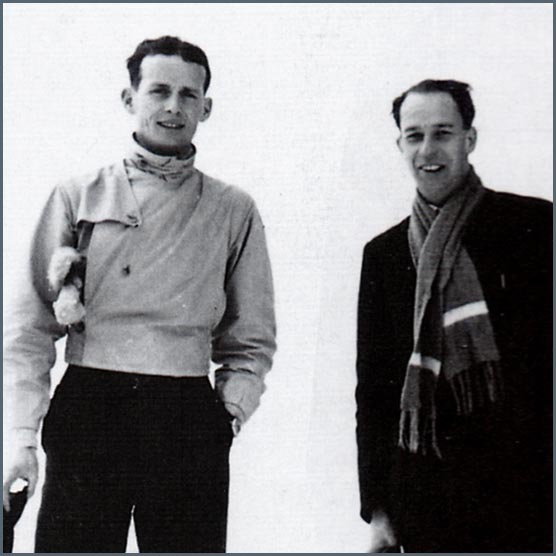
"The challenge is considerable, because we have never done anything so small before!" But Albert Piguet didn't hesitate to carry it out. Seconded by John Hasler for the calculations, they gave a new perspective to the challenge, sketched plans, developed a whole new way of manufacturing, and made the first prototype entirely by hand.
The CH 27 Lemania project is the first job that Albert Piguet gave to John Hasler in Lemania, when it started in 1938. He was then 21 years old and Albert Piguet 24. Hasler was, later, the technical director of Tissot for twenty years, from 1955 to 1975.
Omega management supports the project, the necessary tools were ordered and the first series that was produced was already a success from the beginning. Barely changes would be needed, and those that were minor, only small adjustments, so any problem endangered the project, the precision of the piece was evident, continuing the quality standard of Omega.
The launch of this movement was one of the most important steps for the brand, the beginning of a myth in the history of watchmaking: The world's smallest 12 hour chronograph wristwatch caliber, and the ancestor of calibers 321 and 861, which later equipped the Speedmaster.
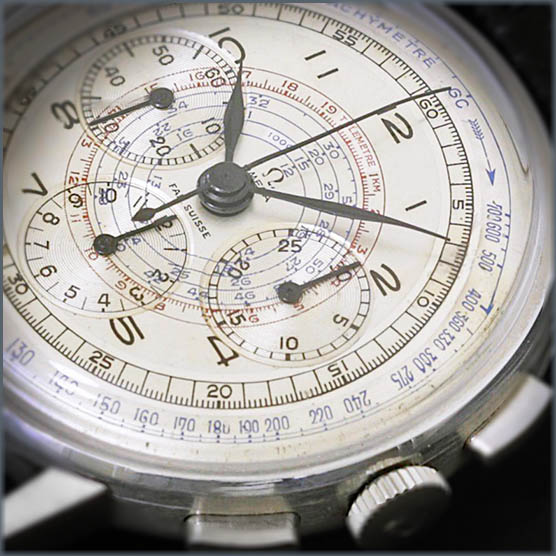
Other models also equipped this movement, such as those corresponding to the DeVille and Seamaster collection, in addition to other Omega chronographs, waterproof or not.
The Caliber 27 CHRO C12 was improved in 1954 by adding an Incabloc shock protection system, as well as including an antimagnetic mainspring. Hence its new designation: 27 CHRO C12 PC AM (PC, pare-chocs AM, anti-magnétique).
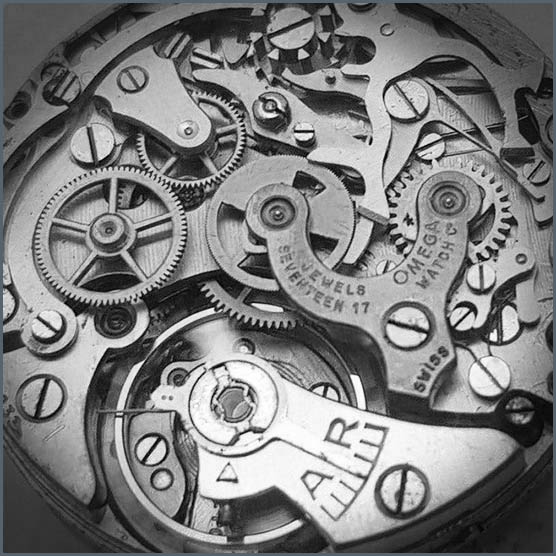
The modifications continued a year later, in 1946. An adjustable bridge would be added to the minute-recording jumper (spring intended to lock the teeth of the minute wheel). On the other hand, the regulator curb pins are lengthened and bent to prevent the Breguet spiral from snagging, especially on the balance spring stud, during possible shocks.
This last idea was due to Paul-Louis Guignard, the timekeeper of the 1936 Olympics, as well as the aesthetics of the model by slightly reducing the dial diameter.
The 27 CHRO C12 was renamed as the 321 caliber.
At this moment, one of the most famous and recognized Omega calibers in its history and in the history of watchmaking was born, the first movement that will equip the Speedmaster.
But we are going to leave this for our next post, where we will immerse into the origin and development of the model responsible for a large part of the huge number of followers achieved by the Swiss brand Omega. There are many prestigious brands, with creations with an incredible level of engineering that are unknown for the vast majority of people, but almost certainly there are few of them who have not heard of Omega.
Isn't it incredible that a single watch is able to get so much attention and make a brand so great?
Thank you for reading!, see you in the next blog post, the part III.

